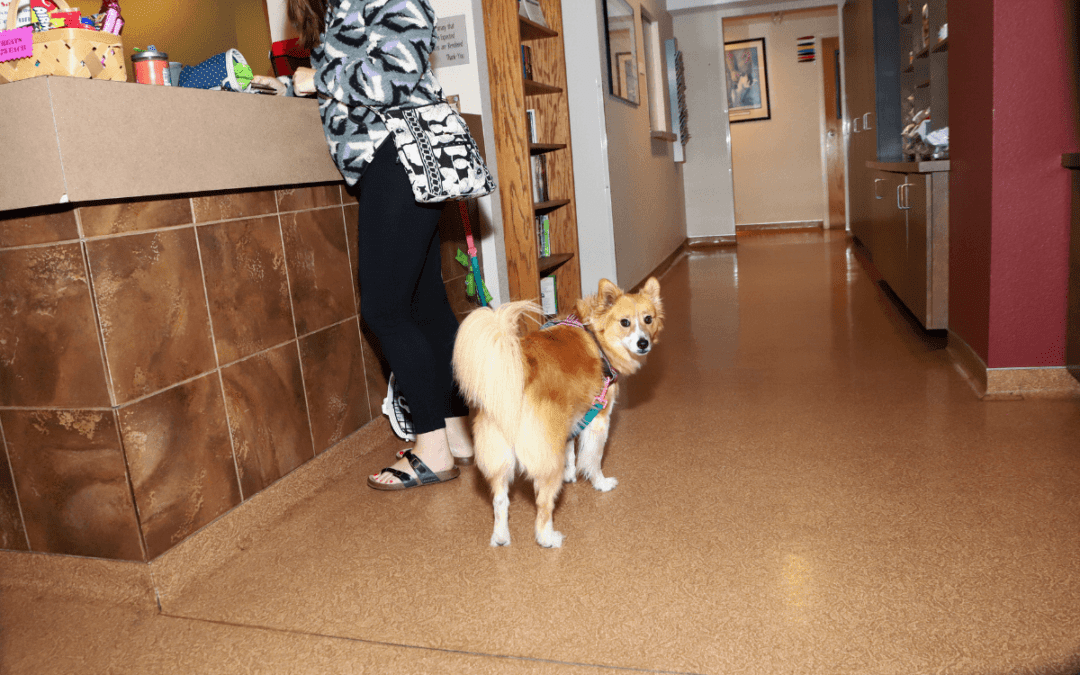Obesity is the most common preventable disease in dogs and cats. Approximately 50-60% of pets are overweight, and 35% are obese. Dogs and cats are considered overweight when 10-20% above their ideal body weight and obese when they weigh 25-30% or more above.
Numerous diseases are associated with obesity, including cancer, osteoarthritis, diabetes, heart disease, breathing troubles, hypertension, skin conditions, bladder stones, sensitivity to heat, and increased risk with anesthesia.
Additionally, cats who are obese have increased risk of developing type-2 diabetes and frequently have difficulty grooming themselves.
Occasionally there may be a medical explanation for obesity, such as an underactive thyroid or overactive adrenal gland. It is important to have overweight pets examined by a veterinarian to see if there’s a medical reason for their condition.
WHAT ARE THE RISKS WITH OBESITY IN PETS?
A large, lifetime study of Labrador retrievers has found that being even moderately overweight can reduce life expectancy by nearly two years compared to their leaner counterparts.
Another study evaluated overweight dogs with arthritis. The patients that were put on a diet to obtain ideal body weight (no medications) had as much or more improvement compared to patients placed on arthritis medications without weight loss.
Body fat is not an inert tissue. Scientific evidence now reveals that it secretes inflammatory chemicals and oxidation stress (free radicals) leading to increased risk of numerous diseases.
HOW DO I KNOW IF MY PET IS OVERWEIGHT?
Evaluate your pet’s body condition, then adjust the amount of exercise and/or total amount of food, including treats.
A good way to evaluate body condition is by using your hands to feel the amount of fat coverage over the ribs. Ideally, you would slightly be able to feel the ribs with flat hands.
If you need to push in your fingertips to feel the ribs, then your pet is probably overweight. This is an easy thing to do at home, no scale needed.
HOW CAN I HELP MY PET REACH AN OPTIMAL WEIGHT?
Measure how much food and treats are fed in a day. That will be used as a baseline for calorie reduction.
Provide regular exercise – ideally 5-6 days a week of at least 15-20 minutes duration.
Reduce the total amount fed in a day – 25% reduction for obese patients, 10% reduction for mildly overweight patients.
Eliminate or reduce high-calorie foods/treats, you may find lower calorie alternatives.
Feed smaller portions when giving treats.
Many pets will beg if you feed table scraps/human food treats. Consider stopping altogether.
Many cats may lose weight and show less aggressive appetite if fed a “metabolic diet,” one lower in carbohydrates and higher in protein.
Body Condition Scoring (BCS) can be applied to pets of various sizes and shapes – refer to the chart above. BCS is used by veterinary professionals to assess appropriateness of body composition, regardless of body weight.
At Westside Animal Hospital, we want to see your pets stay healthy, and your healthy relationship prosper for as long as possible. Please call us and let us know if there is anything we can do to help you or your pet.


